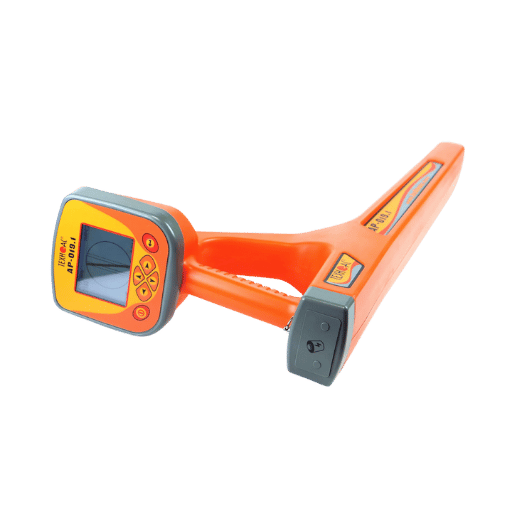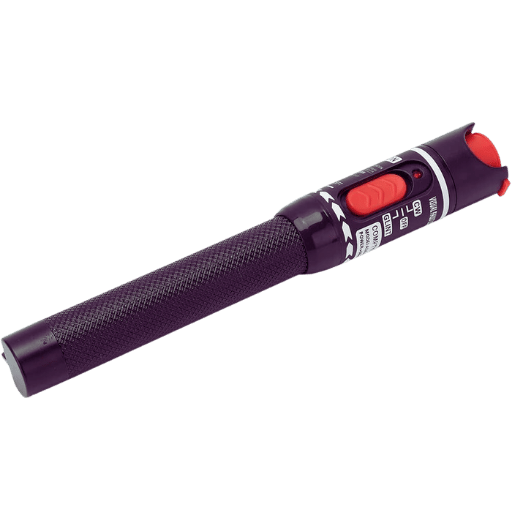A fiber optic cable locator is an integral part of deploying, maintaining, and troubleshooting fiber optic networks. However, the emphasis on accurate and controlled testing equipment increases as the data transmission rate increases. This paper examines the depth of the techniques used by visual fault locator meters to locate specific faults, including any breaks or bends in fiber optic cables. With knowledge of the features and usage of these devices, technicians can perform proper testing management, leading to the best network performance.

A fiber optic cable locator is one of the tools used to detect and pinpoint malfunction occurring in the fiber optical cables. In normal practice, such devices use a red-colored light, fittingly known as functional light, to signal through the fiber so that the technician can visualize breaks, kinks, and other abnormalities that disrupt the passage of the beam. Fiber optic cable locators quickly and exactly find the faulted region of the fiber where the signal is incomplete, and that is why they are important in the improvement and upkeeping of fiber optic network electrical or signal activity interruption.
Among these types of structures, fiber optics are the thin strands of silica or polymer that transfer information in light pulses. Fiber optic data transmission cables are flexible composites of many fibers that facilitate turbo data transfer over considerable extensions with little attenuation. Visual Fault Locators (VFLs) are primarily employed to inspect and maintain these Fibre Optical cable systems. VFLs deliver visible laser brighter red through the fiber’s core, which penetrates through and causes gross flaws such as cutouts and other light emissions. The immediate perception reduces the time taken to locate and rectify abnormalities in the system, ensuring that communication remains efficient and effective.
The VFL works by projecting a red visible laser light beam through the fiber optic cable. This light is usually visible and used to locate any breaks or bends in the fiber optic cable. When the fiber is broken, the light comes out from that area because of the exposure of the internal section of the fiber to the air. This allows technicians to see where the problem is in the cable and fix it quickly and efficiently, ensuring the buildings on-net are dependable. This procedure ensures that the fiber network operates effectively and reliably.


When carrying out a fault analysis with the help of a Visual Fault Locator (VFL), clearly defined steps are followed while interpreting results from fiber tracing to avoid misdiagnosing or undergoing the wrong repair.
Properly examining these indicators allows efficient diagnosis and troubleshooting for systems engineers in fiber optic networks, aiding in proper repairs and preventing unnecessary outages.

Measurement units used in visual fault locators (VFLs) are essential and must be factored in when considering the performance or integration of fiber optics systems. Here are the fundamental ones focused on:
Grasping these units permits the choice of an appropriate VFL suitable for specific testing and field requirements, thereby guaranteeing efficient and accurate fault identification on fiber optic networks.

Overall, customer feedback supports the assertion that the VFL is a reliable device that resolves the professional in-parts requirements of “Testing of fiber optic cable systems.”
Industry specialists have assessed our visual fault locators (VFLs) in great detail, validating customers’ positive comments. VFLs are well-rated in expert evaluations of devices for their accuracy, quality of construction, and ease of operation. Some key considerations mentioned by the specialists are:
Despite these displacements, when we conduct head-to-head comparison tests, our VFLs are almost always placed in the first position compared to other models with regard to effectiveness, employability, and pricing. They recommend these VFLs for routine operations and also during fitting assistance for complex maintenance works in systems using optical fibers.

Visual fault locators (VFL) are an important part of fiber optics management and network repair. In these sectors, VFL is used to locate and fix breaks, bends, and other related problems when they affect performance to help reduce downtime. VFLs are also employed at the time of installation to check the condition of the new links while knowing how they are used. Data centers are also used to find faults at the core of densely populated physical infrastructures. This, as a result, means that any interruptions in service would be attended to in the least possible time, thus ensuring the efficiency of all activities. If there were any service problems in the operations of telecommunications and data centers, they would be put back in order quickly.
In addition to that, our objective is to apply Visual Fault Locators (VFLs) like the Orion Compact visual test set in cable providers and network carriers to enhance the functionality and performance of the fiber optic networks. VFLs have been used largely for trouble shooting and locating places of breaks, bends, or fibers poorly connected in the optical fibers. This makes it possible to quickly identify and correct any problems, thereby preventing prolonged delays and ensuring a good quality of service. While installing new network systems and repairing the old ones, VFLs also make running such networks at full capacity possible. That reduces downtime times and therefore increases customer satisfaction, making it necessary for cable providers and network vulgar to have VFLs.
Visual Fault Locators (VFLs) are also useful in engineering and infrastructure projects. This helps to either install the faults or get rid of them for effectively putting up and maintaining the fiber optic cables. VFLs are becoming popular due to interference during installation and operation to discover and eliminate failure during installation. This level of accuracy helps to deliver a project on time, and more so when it comes to operating such essential services or infrastructure, the success and efficiency are maintained.
A: The fiber optic cable locator is pen-shaped and known as the visual fault locator. A VFL is used to look up and check the condition of fiber optic cables. It consists of a laser source that emits a bright red light that can penetrate the cable sheath and indicate to the service technician the place of fractures, bends, or other defects in the circuit of the fiber optic coil.
A: In assessing a product description, scan through for some features for the wavelength (typically 650nm), output power (expect to find this within the 30mW range), range( usually up to 10km), connector type (2.5mm universal adapter design is often used), battery life, and any other support items such as a purse. These features recognize that the locator can be used in different modes of fiber optic testing.
A: A fiber optic cable locator can assist in producing the building list as it enables the technicians to follow the fiber directs and locate lit buildings, which is instrumental to telecom companies in globalizing and enhancing their networks. Telecom companies can take advantage of the fiber height and create a geographical map of currently covered buildings as well as look for near-net buildings for expansion.
A: Certainly, fiber optic cable locators are suitable for application in different types of fiber optic networks, such as telecom, data core, and local area networks. They are multifunctional devices applicable in the repair, maintenance, and installation of several fiber optic networks.
A: FiberLocator ensures that customers have maps or even buildings with fiber or a lit system. This, integrated with a physical fiber optic cable locator, enables the technicians to search for the cable sufficiently well and make the fiber maps. Such a transfer of information between various units enhances performance in network asset logistics and planning.
A: Most fiber optic cable locators are pocked-sized radiologists or pen-type structures, which considerably enhances portability. A number of such models have a suitcase, which is very convenient to put in a toolbox. These types of devices are small and light in weight, which makes it possible for technicians to conduct various field tests without having to carry bulky equipment.
A: Fiber optic cable locators are very helpful in network coverage planning. They help technologists map existing fiber routes and, more importantly, determine the shortest routes for new connections. This information helps in making decisions on how best to optimize network coverage, identify new areas that need expansion, and determine which on-net and near-net buildings can be serviced.
A: When buying a fiber optic cable locator on Amazon.com, consider factors such as the manufacturer’s reputation, product reviews, product specifications (output power, range, etc.), and the ASIN (Payment standard identification number) to avoid buying the wrong product. Search for fiber optic cable locators with universal 2.5mm connectors and hose attachments and those that come with pouches for carrying as a bonus.
A: Fiber optic cable locators have significant advantages when dealing with wiring problems in fiber optic networks. They can locate faults like breaks and bends in the fiber by using a bright light. This relieves engineers from diagnosis and allows them to work efficiently on areas where problems have been localized without the use of sequential tests, thereby reducing troubleshooting.
A: Fiber optic cable locators do not require special training for users; therefore, suitability applies to specialists and general users. They are easy to use and often consist of a single switch, which turns the laser on regardless of whether he/ she’s gone through any experience to that effect. Nonetheless, their accuracy and functionality are adequate to make them necessary in the hands of fiber optic systems specialists.